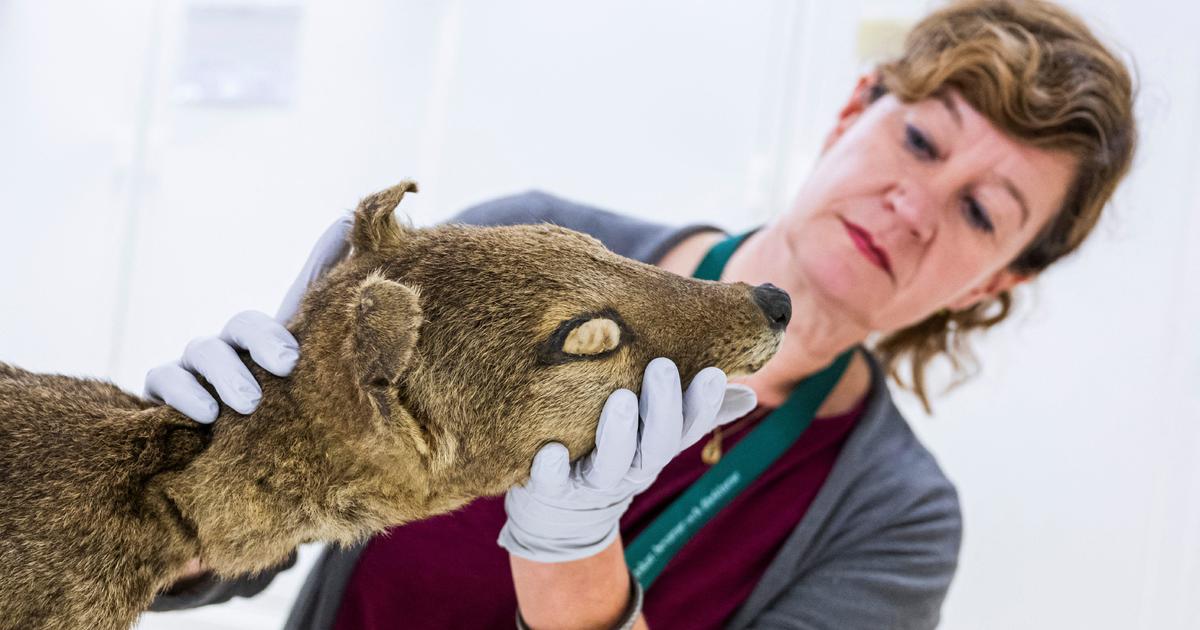Scientists have for the first time recovered and sequenced RNA from an extinct species, the Tasmanian tiger, a Stockholm University researcher told CBS News. The breakthrough potentially raises hope for the resurrection of animals once thought lost forever.
“People didn’t think it could really be done,” Marc Friedländer, an associate professor in molecular biology at Stockholm University, told CBS News.
Love Dalen, a Stockholm University professor of evolutionary genomics who co-led the project, told the AFP that “RNA has never been extracted and sequenced from an extinct species before.”
“The ability to recover RNA from extinct species constitutes a small step (toward) maybe being able to resurrect extinct species in the future,” he said.
Dalen and his team were able to sequence RNA molecules from a 130-year-old Tasmanian tiger specimen preserved at room temperature in Sweden’s Museum of Natural History.
JONATHAN NACKSTRAND/AFP via Getty Images
Then, they were able to reconstruct skin and skeletal muscle RNA.
RNA is a molecule that is used to convey information from the genome to the rest of the cell about what it should do.
“If you’re going to resurrect an extinct animal, then you need to know where the genes are and what they do, and in what tissues they are regulated,” Dalen said, explaining the need for knowledge about both DNA and RNA.
Friedländer told CBS News that DNA is stable and preserves well over millions of time but RNA is very transient and easily destroyed, so the new technique marks a “proof of concept.” He added that RNA can reveal information that DNA cannot.
“If we can take the DNA of an extinct animal we know what genes were there but if we get the RNA we actually know what the genes were doing, which ones were active, so it gives a whole new dimension of information,” he said.
Friedländer said that researchers were able to detect a couple new genes that could not have been discovered by DNA itself.
The last known living Tasmanian tiger or thylacine, a carnivorous marsupial, died in captivity in 1936 at the Beaumaris Zoo in Tasmania.
After European colonization of Australia, the animal was declared a pest, and in 1888, a bounty was offered for each full-grown animal killed.
Scientists have focused their de-extinction efforts on the Tasmanian tiger as its natural habitat in Tasmania is largely preserved.
Friedländer told CBS News there are ethical implications to consider in terms of bringing extinct animals back to life.
“For the Tasmanian tiger, you could say these were actually brought to extinction by humans not very long ago so in this case we would be kind of correcting our own interference,” he said.
Findings may “help us understand the nature of pandemics”
Daniela Kalthoff, in charge of the mammal collection at the Museum of Natural History, said the idea of possibly resurrecting the Tasmanian tiger was an “exciting idea.”
“This is a fantastic animal and I would love to see it live again,” she said, demonstrating the black-and-brown striped skin the researchers used in their study.
Their findings also have implications for studying pandemic RNA viruses.
“Many of the pandemics that have happened in the past have been caused by RNA viruses, most recently the coronavirus but also … the Spanish flu,” Dalen explained.
“We could actually go and look for these viruses in wild animal remains stored in dry museum collections. That might actually help us understand the nature of pandemics and where pandemics come from,” he said.
The study opens the door to using museum collections in this new way.
“There are millions and millions of dried skins and dried tissue from insects, mammals and birds and so on in museum collections around the world, and one could actually now go and recover RNA from all these specimens,” Dalen said.












